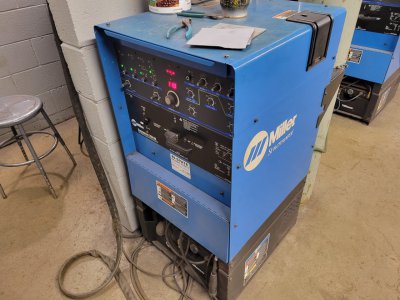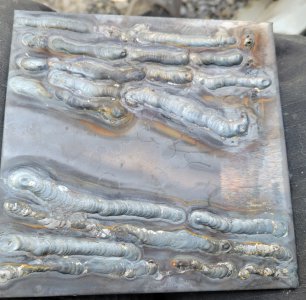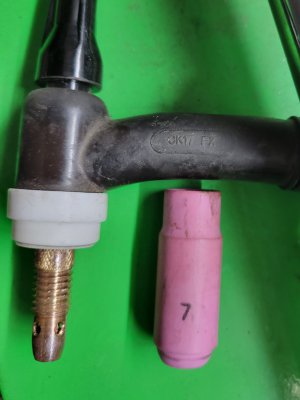- Joined
- Jul 5, 2014
- Messages
- 2,776
The welder is a miller syncrowave.

The woman instructor was back and apparently her and the day time instructor looked over the machine and changed out the argon tank. They couldn't get it weld either with the old tank. She said sometimes that happens even thought the gauge showed 500 pounds. Big difference with the new tank.
She also showed me how to weld toward me. Instead of right to left, I go top to bottom. I can see the puddle now and I couldn't see if before. I wait for the puddle to form and watch it kind of shimmer, the dip, move it wait for the shimmer than dip and so on. Major difference. I feel like I'm actually getting somewhere now. I wish I'd have done that at first. My main problem is I can't seem to go in a straight line and when I get tired at the end of class it
Next week she wants me to try aluminum. Said I'll love it. I hope so.
This is my attempts at welding towards me.

The woman instructor was back and apparently her and the day time instructor looked over the machine and changed out the argon tank. They couldn't get it weld either with the old tank. She said sometimes that happens even thought the gauge showed 500 pounds. Big difference with the new tank.
She also showed me how to weld toward me. Instead of right to left, I go top to bottom. I can see the puddle now and I couldn't see if before. I wait for the puddle to form and watch it kind of shimmer, the dip, move it wait for the shimmer than dip and so on. Major difference. I feel like I'm actually getting somewhere now. I wish I'd have done that at first. My main problem is I can't seem to go in a straight line and when I get tired at the end of class it
Next week she wants me to try aluminum. Said I'll love it. I hope so.
This is my attempts at welding towards me.




